

|
In 1987, about the same time I started hiking trails in the Appalachians photographing native plants, I was deeply moved by a lecture at the ARS Convention in Eugene, OR. It was given by Tony Schilling, the Curator of Wakehurst Place, part of the Royal Botanic Gardens at Kew. At this meeting, we all sat in stunned silence as he showed slides from Nepal and the Himalayas as he discussed the incredibly rich flora from the region.
I doubt that I will never see that area in person but it is surely one of the most spectacular floral displays on this earth. We didn’t want Tony to stop but when he did conclude his remarks, many of us flocked to the podium to thank him for such an inspiring presentation. Tony kindly offered to send me a copy of one of his slides that I could share with others. The photo to the right is a scan of that slide. Thank you, Tony! I look at that image whenever I need inspiration, or when I need to explain to others why we must preserve wild places. Yes, Tony has inspired many of us. I learned that he had spent two years in the 1960s helping to establish the National Botanical Garden of Nepal in Godavari. The expert guidance he provided at that time has helped make the garden a world class facility. It is probably the only arboretum in the world that has totally eliminated the use of plastic. I was happy to see that Tony was honored in 2019 by the Government of Nepal for his major contributions to horticulture in their country. More Information Here Rhododendron arboreum is one of the most widely distributed species in the world growing in broad areas of Southeast Asia, especially near the Himalayas in South Western China, Northern India, and Nepal. It is a tree, often reaching heights of 80 feet tall (24 m) or more. The typical form has blood red flowers in large, tight trusses of up to 20 blossoms, and each flower can measure up to 2 inches across. Some forms at higher elevation are rose, pink or even white. The dark green, deeply veined foliage is stiff and pointed, making an elegant collar to frame the formal trusses. The world’s largest rhododendron of any kind is a specimen of R. arboreum discovered in 1993 at Mount Japfu in India. It measures 108 ft tall (33 m). Blooming typically in March and April, the stature of mature specimens is amazing but the setting where they grow in places like Nepal with the snow-capped Himalayas in the background is beyond perfection. Nepal has named this plant its national flower. Never having seen R. arboreum in the wild, I am writing this article from personal observations of some gardens I have visited and through the eyes of others. In addition to Tony Schilling, want to give special thanks to Sonja Kassels of Bremen, Germany, who provided the image below taken while strolling through a forest of huge R. arboreum trees in Nepal. I also want to thank Dr. Hartwig Schepker, Director of the Bremen Rhododendron Park, for his photo of a solitary R. arboreum in Sikkim. The rest of the photos were taken by the author. |
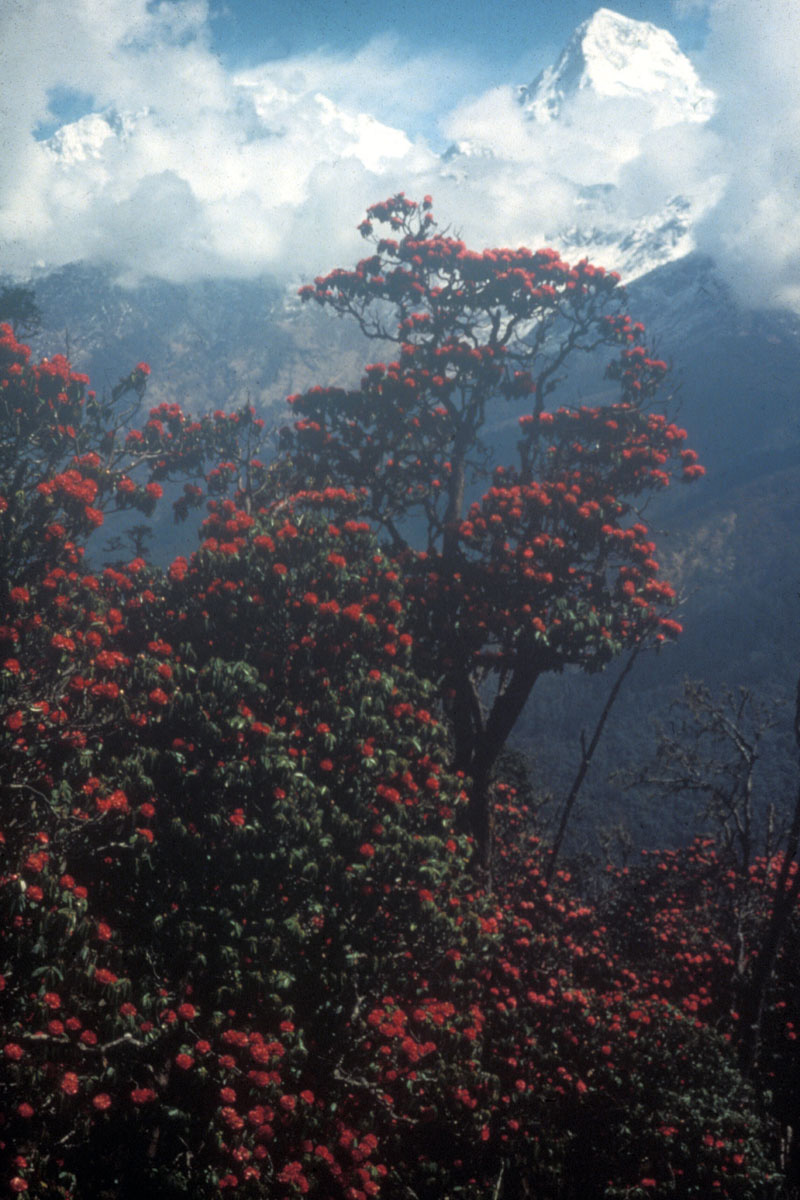
Rhododendron arboreum Flowering against the backdrop of the Himalayas in Nepal Photo: Tony Schilling |
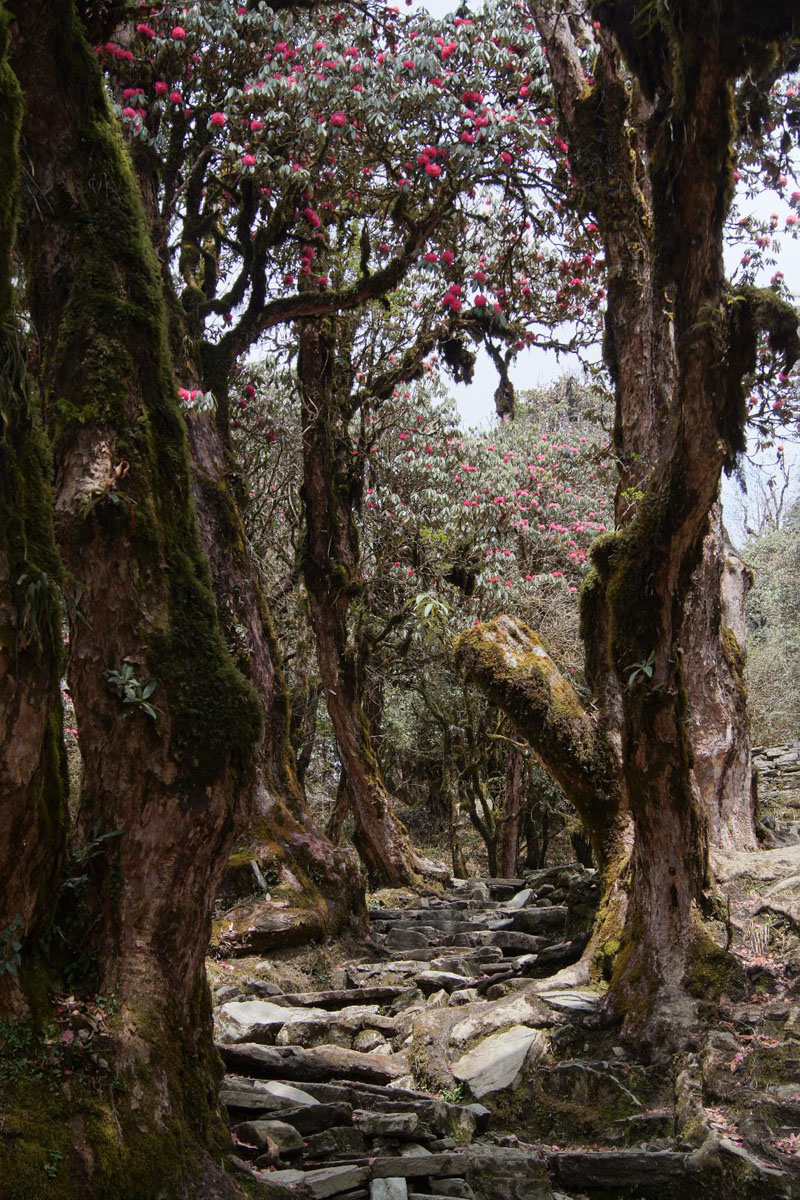
Massive trunks in an R. arboreum forest in Nepal Photo: Sonja Kassel |
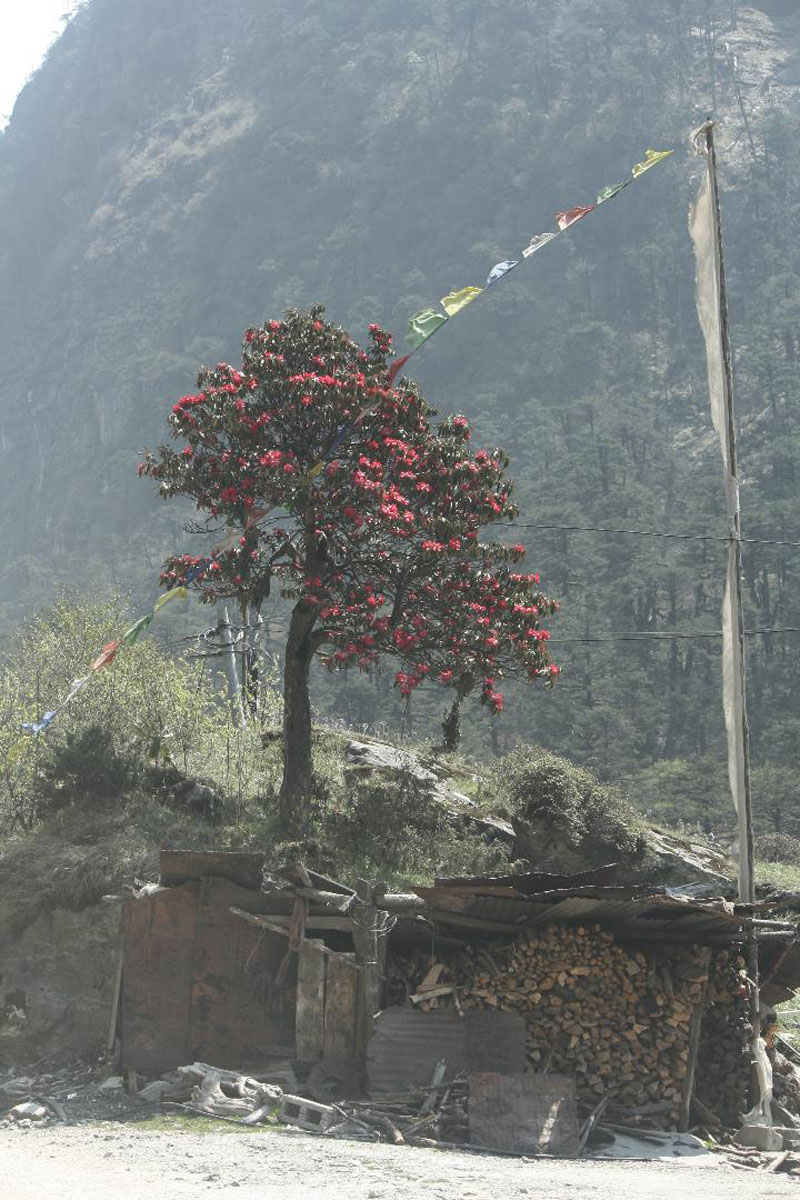
A solitary R. arboreum in Sikkim Photo: Hartwig Schepker |
Videos of R. arboreumThere are a number of videos on YouTube that show R. arboreum in the wild. Below are some of my favorites:
|
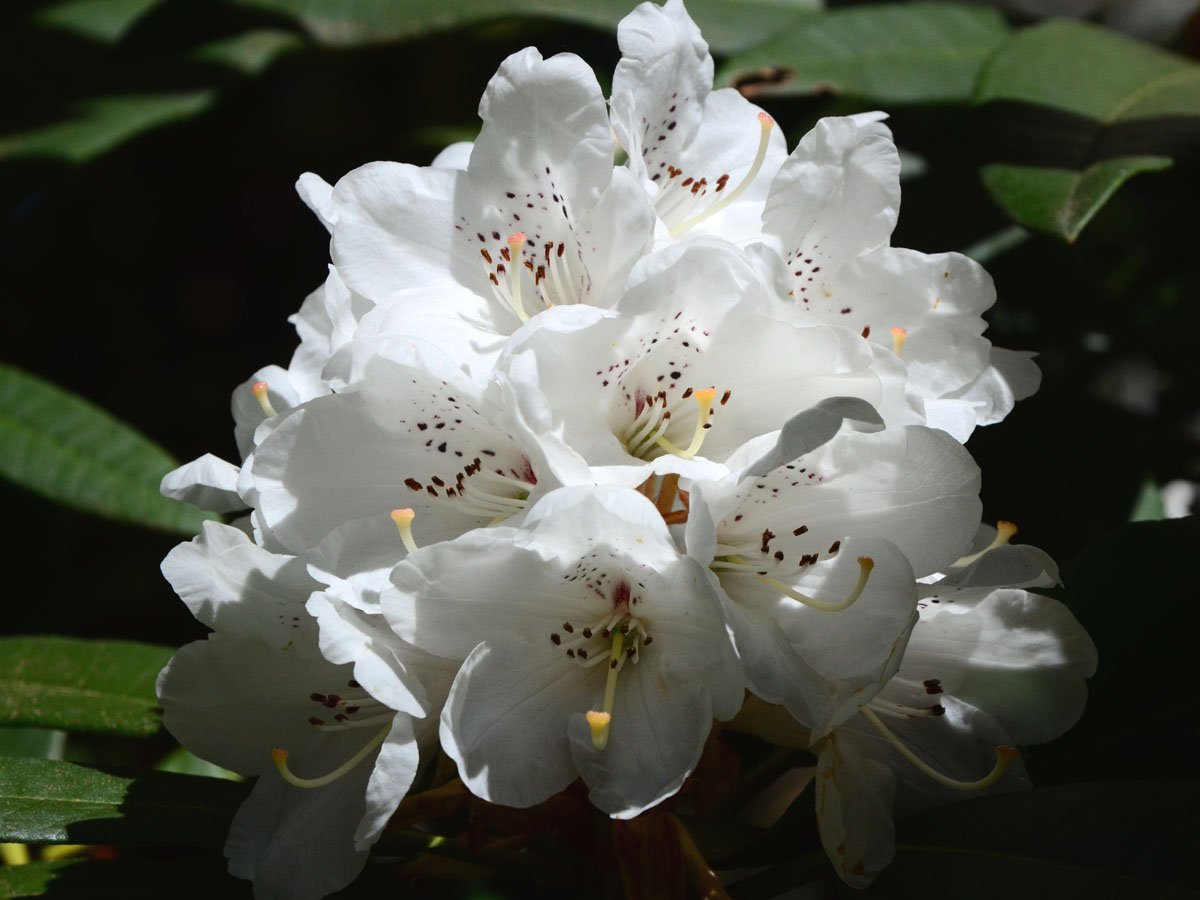
|
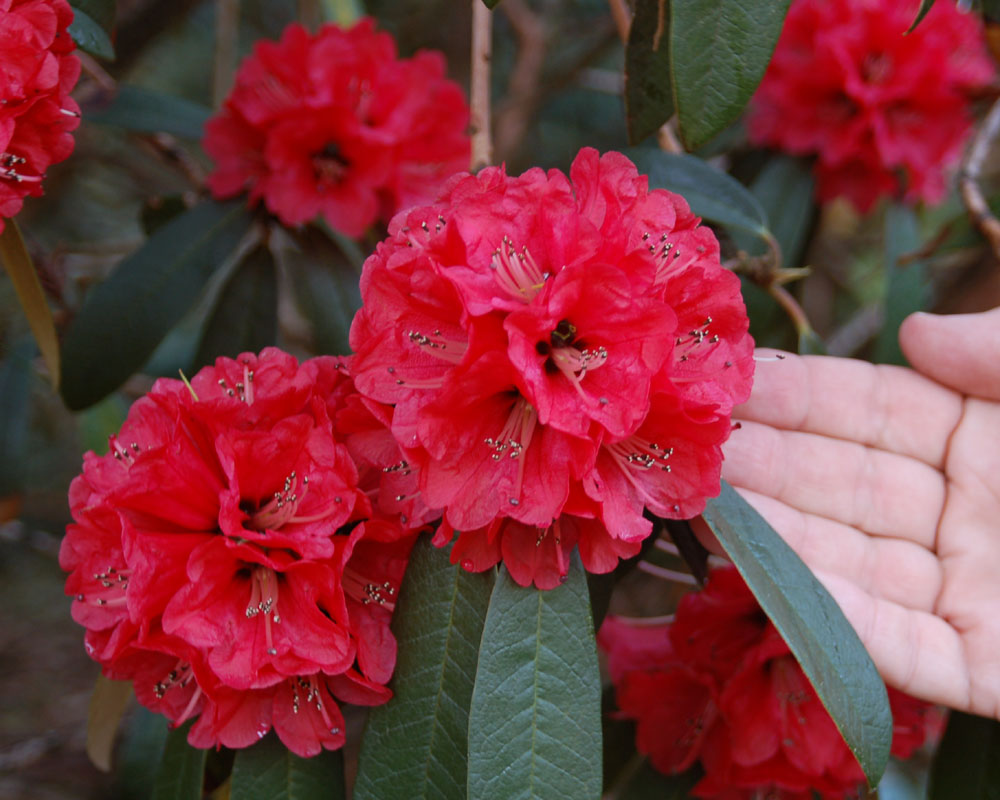
|
|
The first forms of R. arboreum were introduced into England in 1811 and they became a parent of many colorful hybrids by being crossed with hardier species. The cross (caucasicum x arboreum) produced 'Nobleanum' and (catawbiense x arboreum) produced 'Russellianum'.
There are quite a few subspecies and variants of R. arboreum I have not seen, but all seem to become impressive tree-like specimens. A precursor of this species was likely one of the "founder populations" described by Steve Henning in his article "The History of Rhododendrons". Although originally widespread across Southeast Asia and probably rather uniform at one time, the many variations evolved over time as the Himalaya grew due to plate techtonics, the monsoons arrived, regions became isolated, and local climates changed.
The best reds are forms of R. arboreum ssp. delavayi from lower elevations near the Himalayas and R. arboreum ssp. zeylanicum from the island nation of Sri Lanka off the coast of India. They are much less hardy than other forms but they do seem to survive in some sheltered gardens. R. arboreum ssp. cinnamomeum is much hardier since it tends to grow at higher altitudes in the region. The flower color can be pink to carmine, and occasionally white. It seems to be hardy in the UK and Pacific Northwest, but I have not seen it in the eastern US. I was very impressed with a white R. arboreum I had seen in June Sinclair's garden. Her lovely woodland garden is on the sheltered Olympic Peninsula. You walk among mature rhododendrons, tall evergreen trees, and there are wonderful wildflowers and ferns at your feet. It is easy to imagine you are in some wild rhododedron paradise. White forms of R. arboreum are rare and there is a stunning plant of the same variety at the Rhododendron Species Botanic Garden. Steve Hootman has it in a very prominent spot along a main path and it is backed up by a gorgeous Sycamore Maple, Acer pseudoplatanus 'Brilliantissimum' that always draws attention. Steve tells me its official name is R. arboreum ssp. cinnamomeum var. roseum forma album which is certainly a lot to put on a name tag. He says it is one of the finest specimens and they may eventually give it a varietal name. The selection originally came from Trewithen Gardens in the UK. The pure white flowers do have occasional crimson spots on the corolla. The flawless plant habit is full and well rounded with long, dark green leaves. The foliage collar is a perfect stage for those formal, conical trusses. Steve Krebs, Karel Bernady, and I were unable to attend the 1997 ARS Convention in Oban, Scotland, so we decided to tour some Scottish gardens on our own after a 2008 Rhododendon Conference in Edinburgh. One outstanding spot was the Benmore Botanic Garden where we admired a large R. arboreum ssp. cinnamomeum var. roseum that was becoming a tree. It was an impressive specimen with multiple trunks and attractive gnarled bark. The textured foliage was dark green and the lovely rounded trusses opened pink and faded to blush white as they aged. Several selections of this species have won awards including a rich rose pink named R. arboreum 'Tony Schilling' which received the F.C.C. award. |
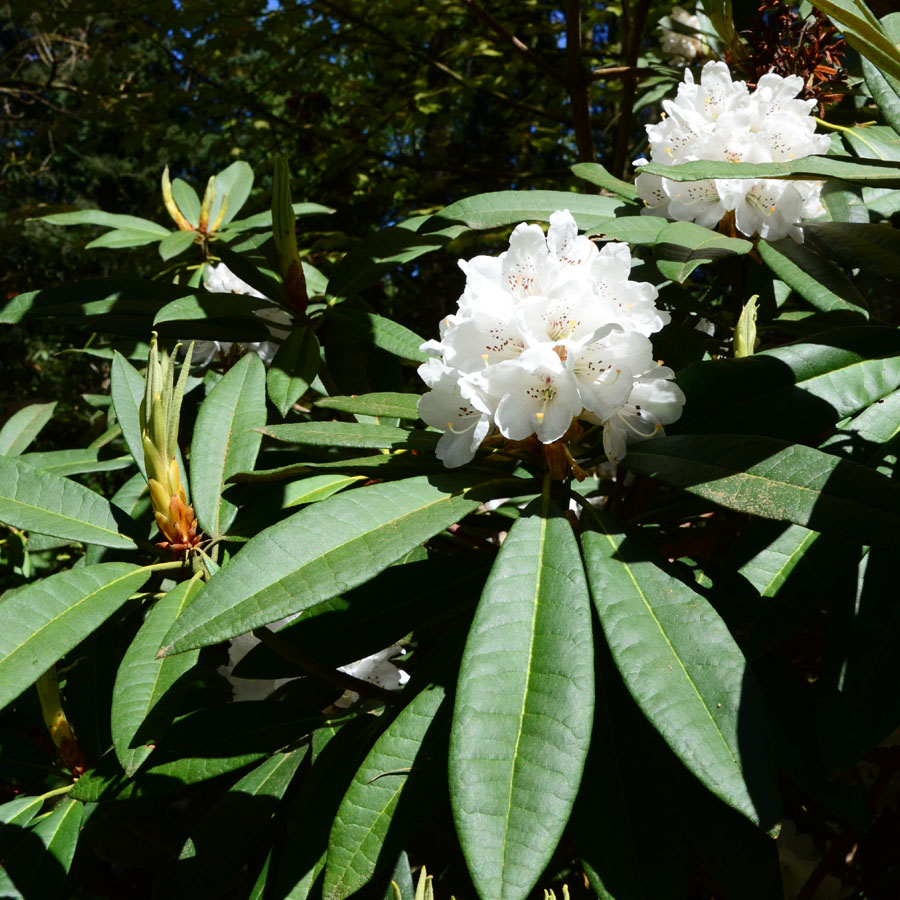
R. arboreum ssp. cinnamomeum var. roseum forma album at the RSBG. |
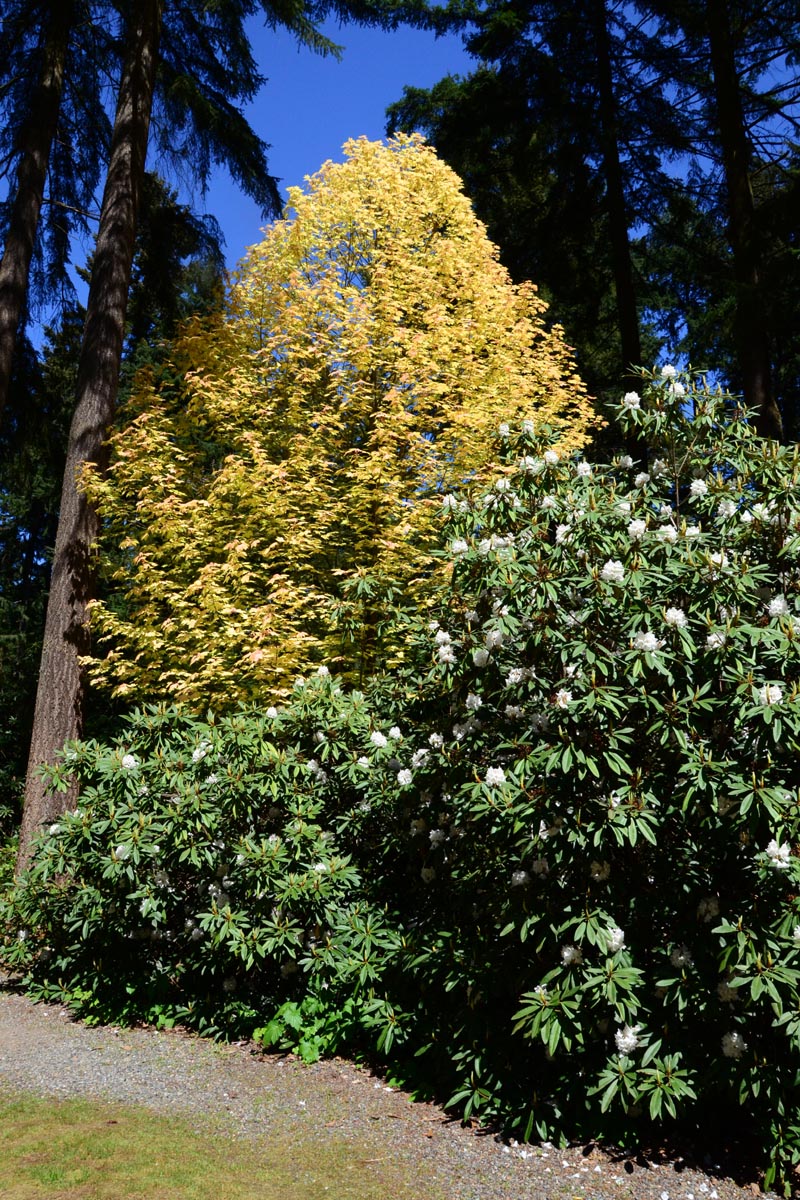
|
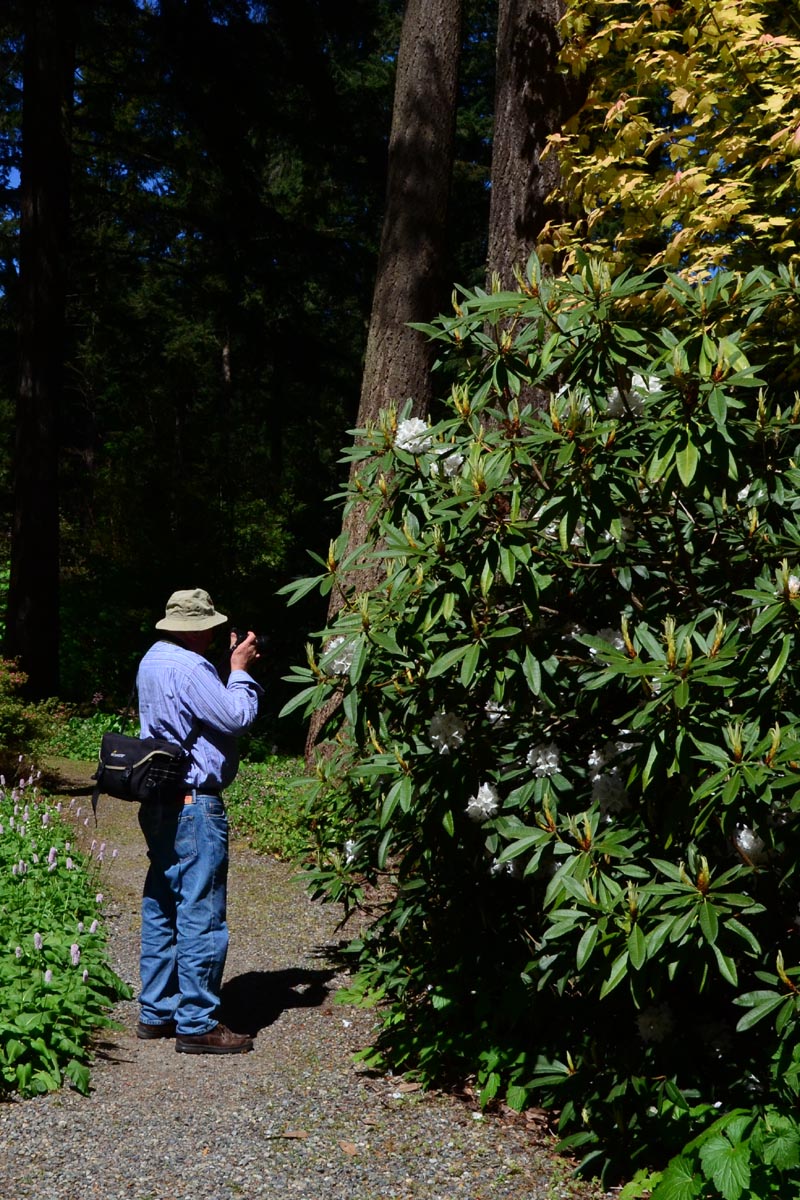
Karel Bernady photographs the white R. arboreum at the RSBG |
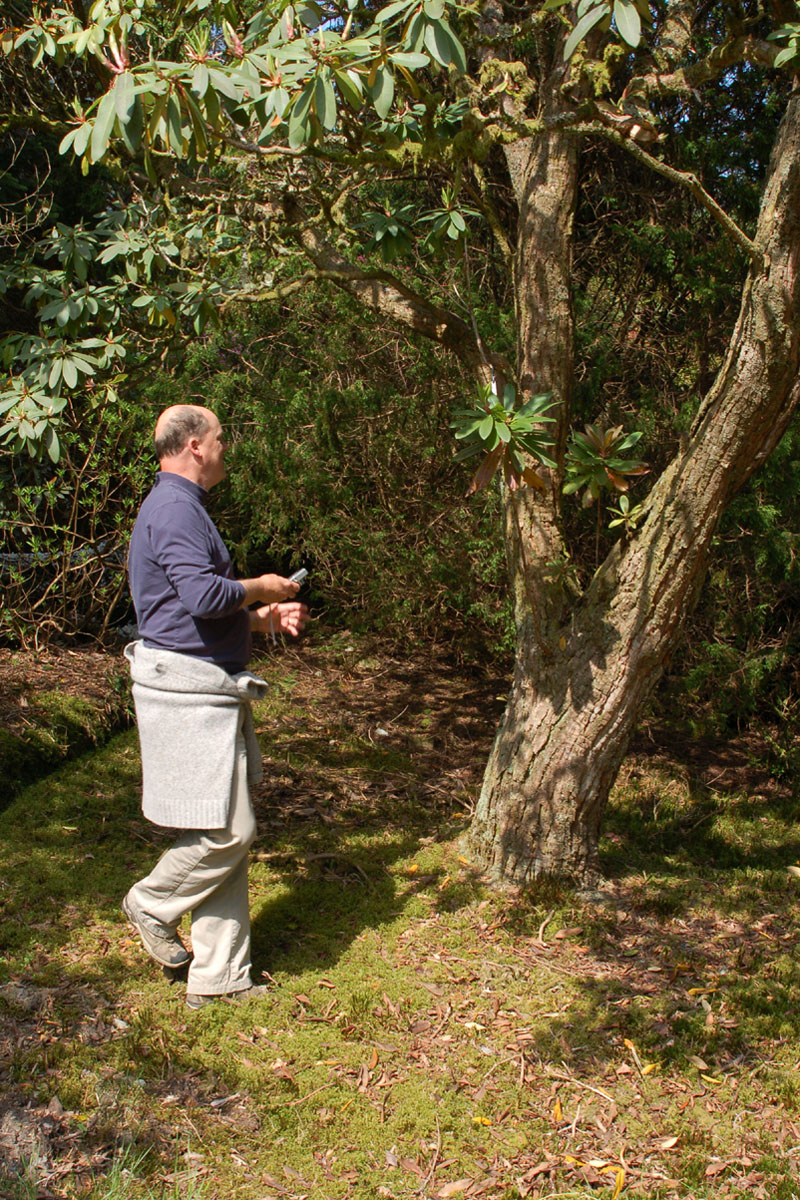
Steve Krebs inspects the trunk of R. arboreum ssp. cinnamomeum var. roseum at Benmore. |
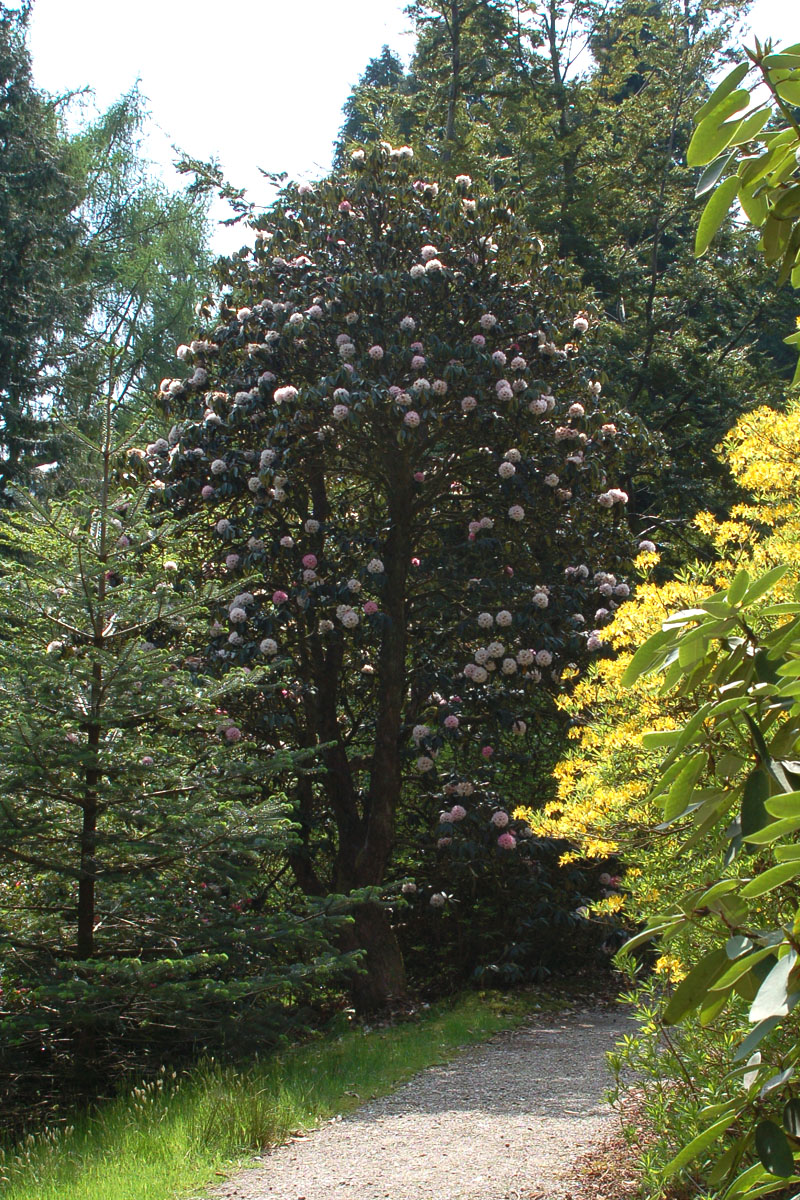
|
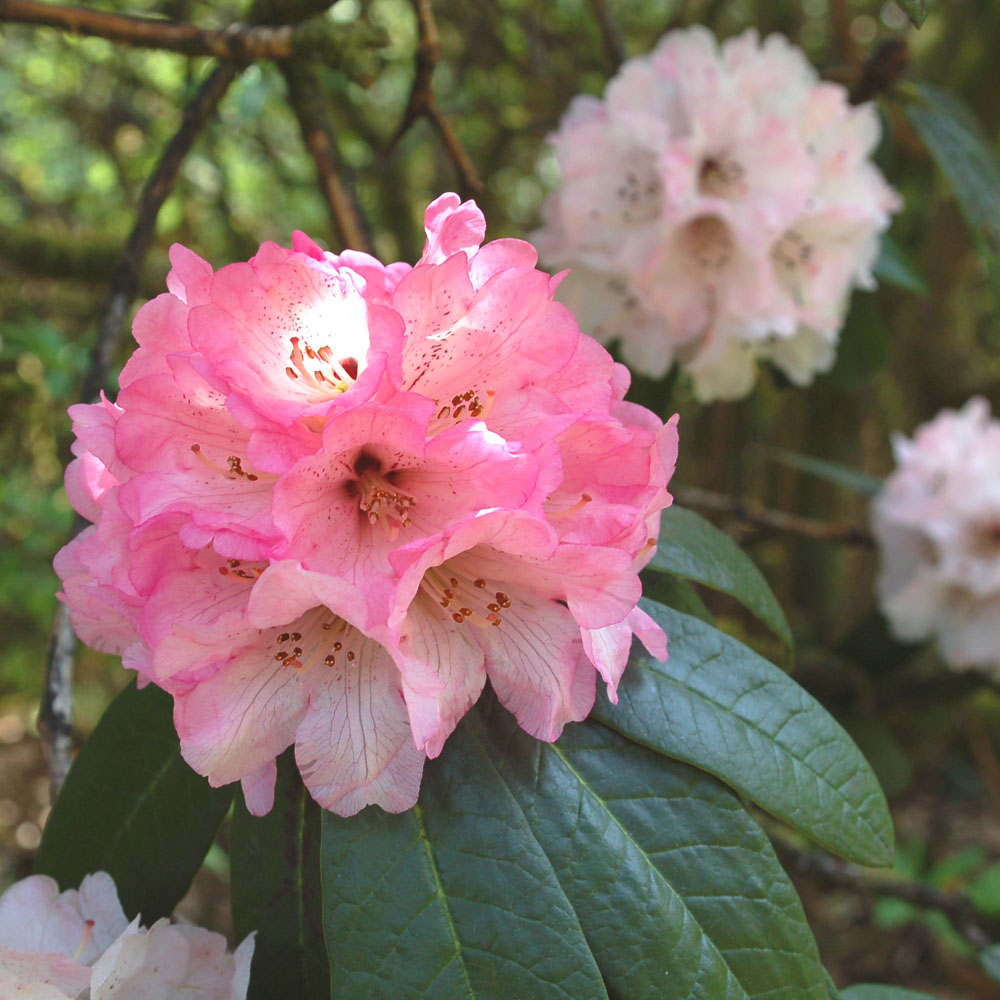
R. arboreum ssp. cinnamomeum var. roseum at Benmore Flowers open pink and fade to a blush white. |
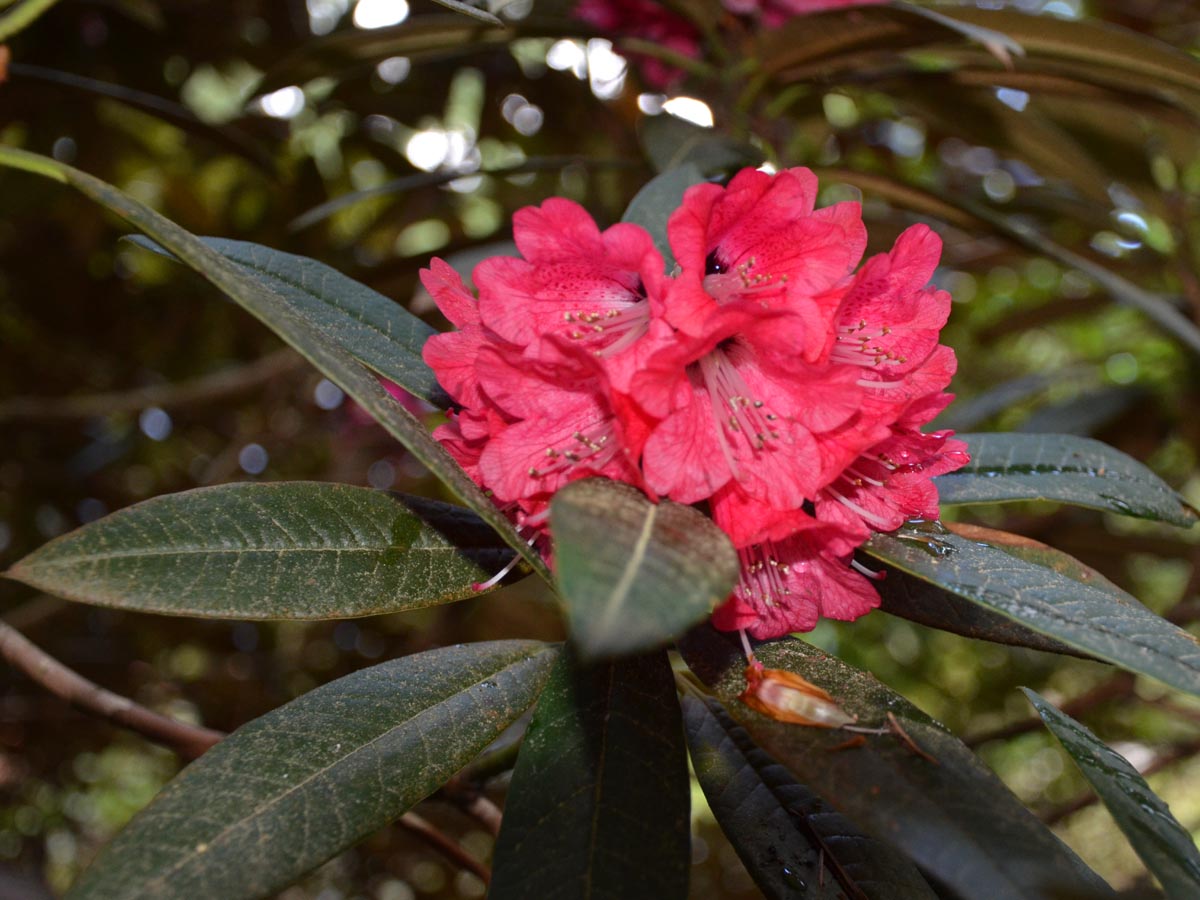
R. arboreum ssp. cinnamomeum June Sinclair Garden |
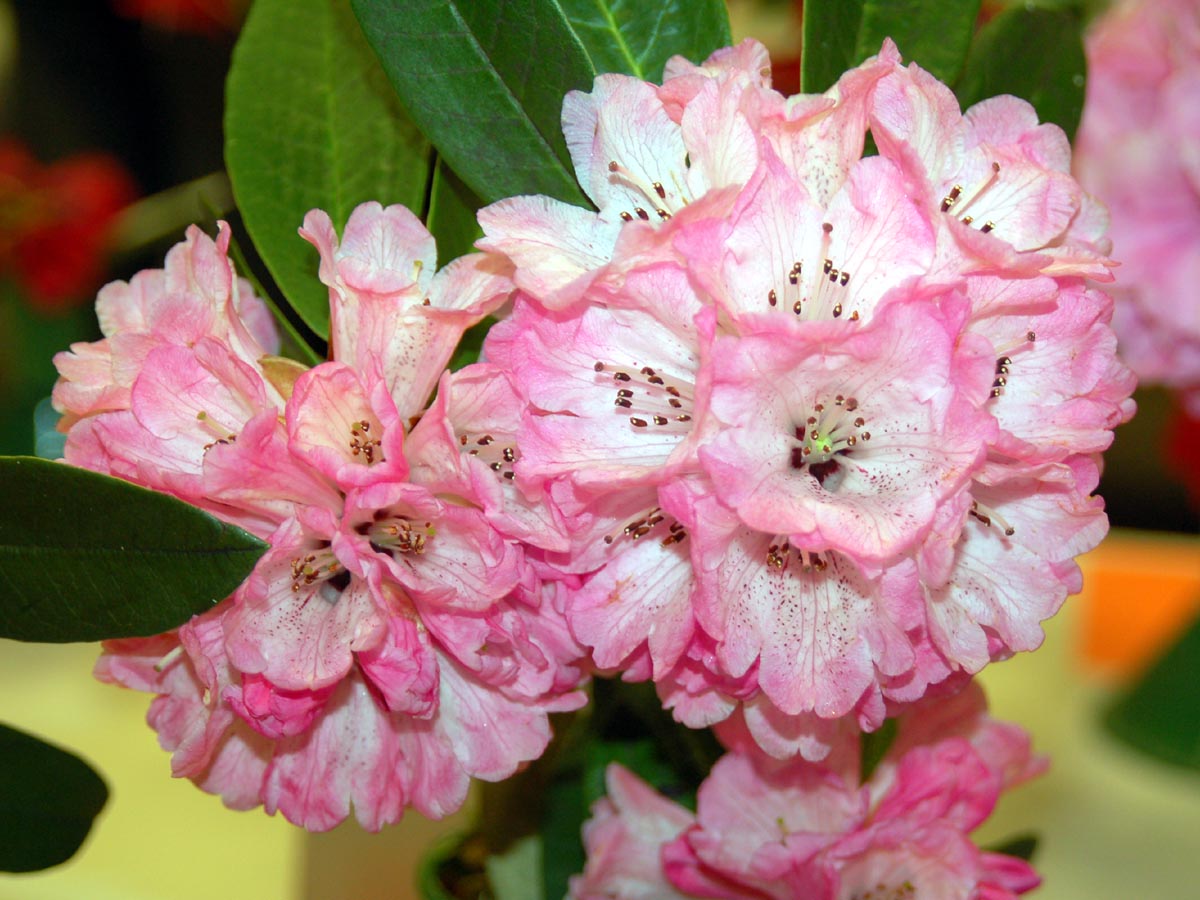
Scottish Rhododendron Society Show, Edinburgh |
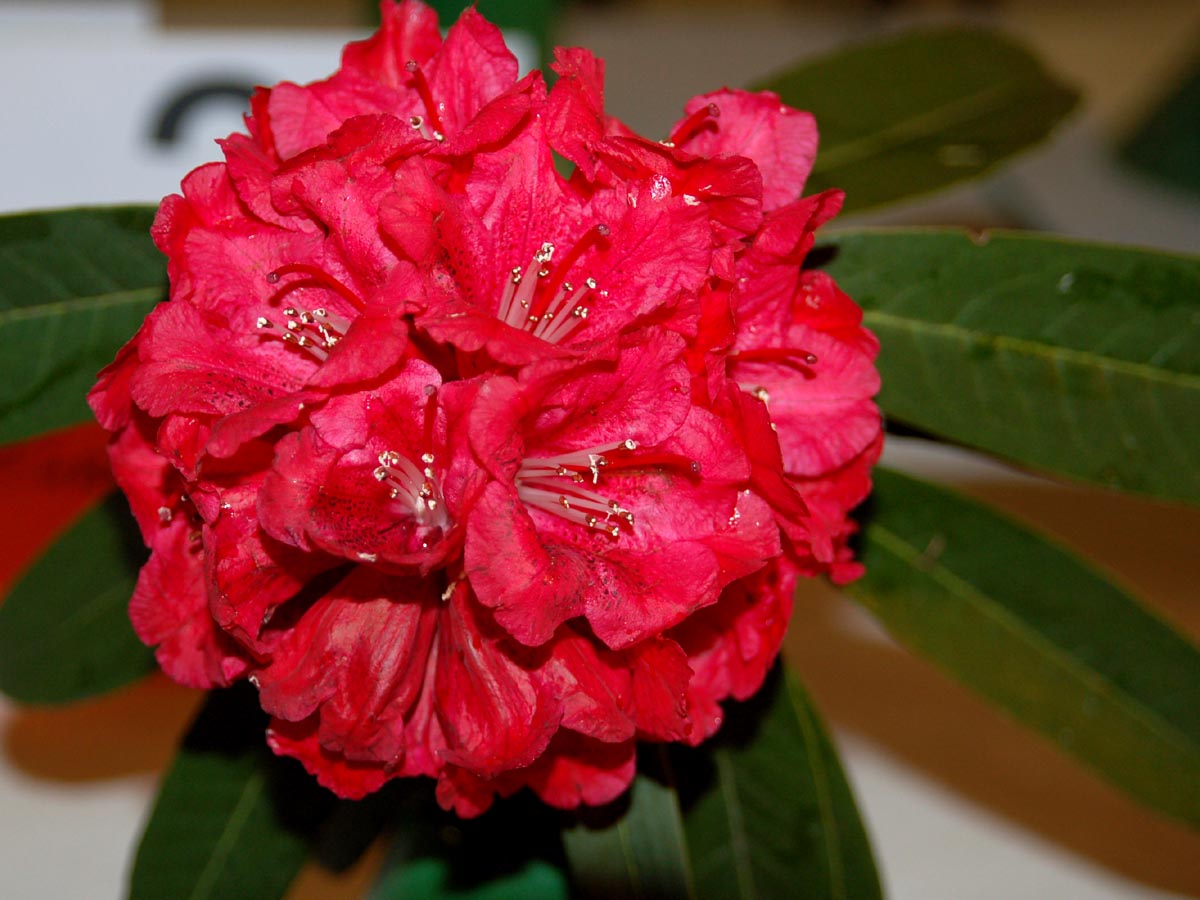
R. arboreum ssp. cinnamomeum Scottish Rhododendron Society Show, Edinburgh |
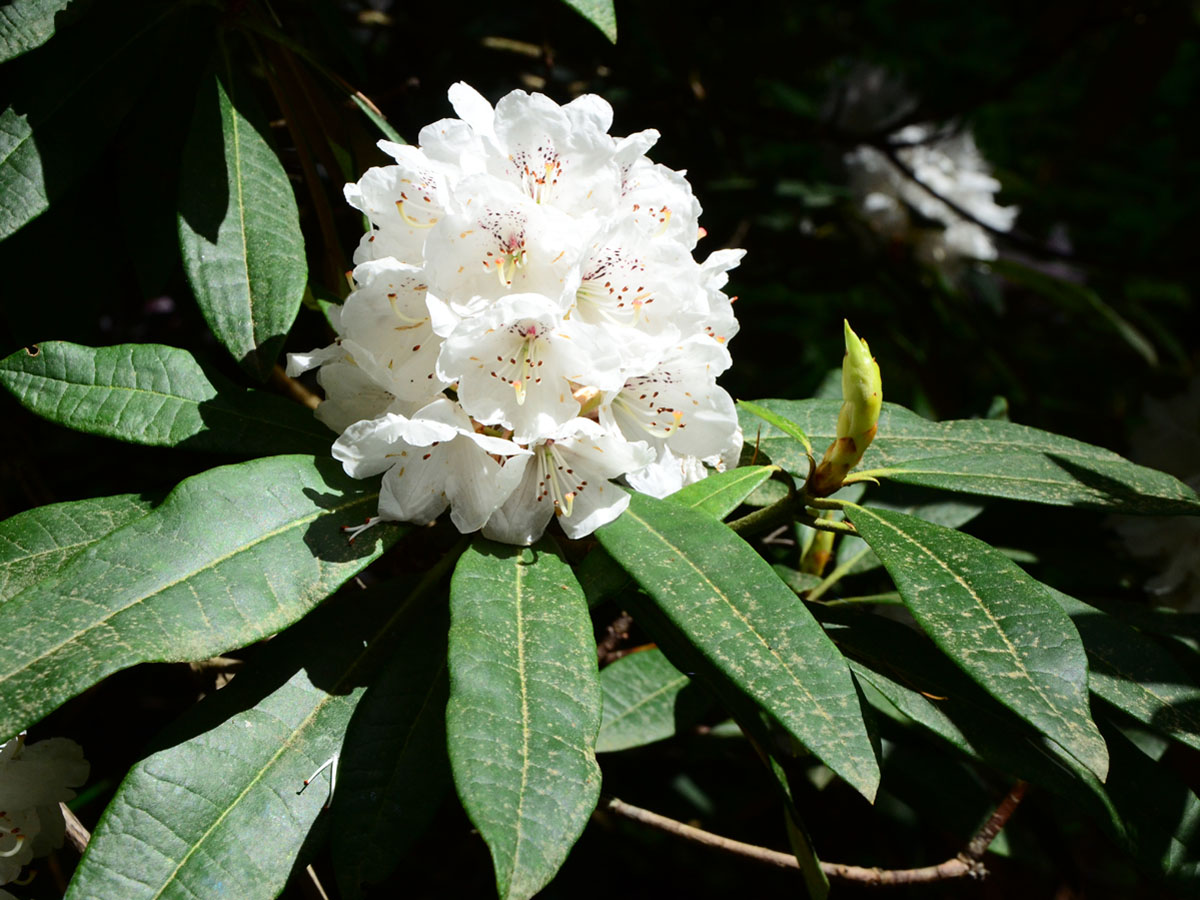
R. arboreum ssp. cinnamomeum, White form June Sinclair Garden |
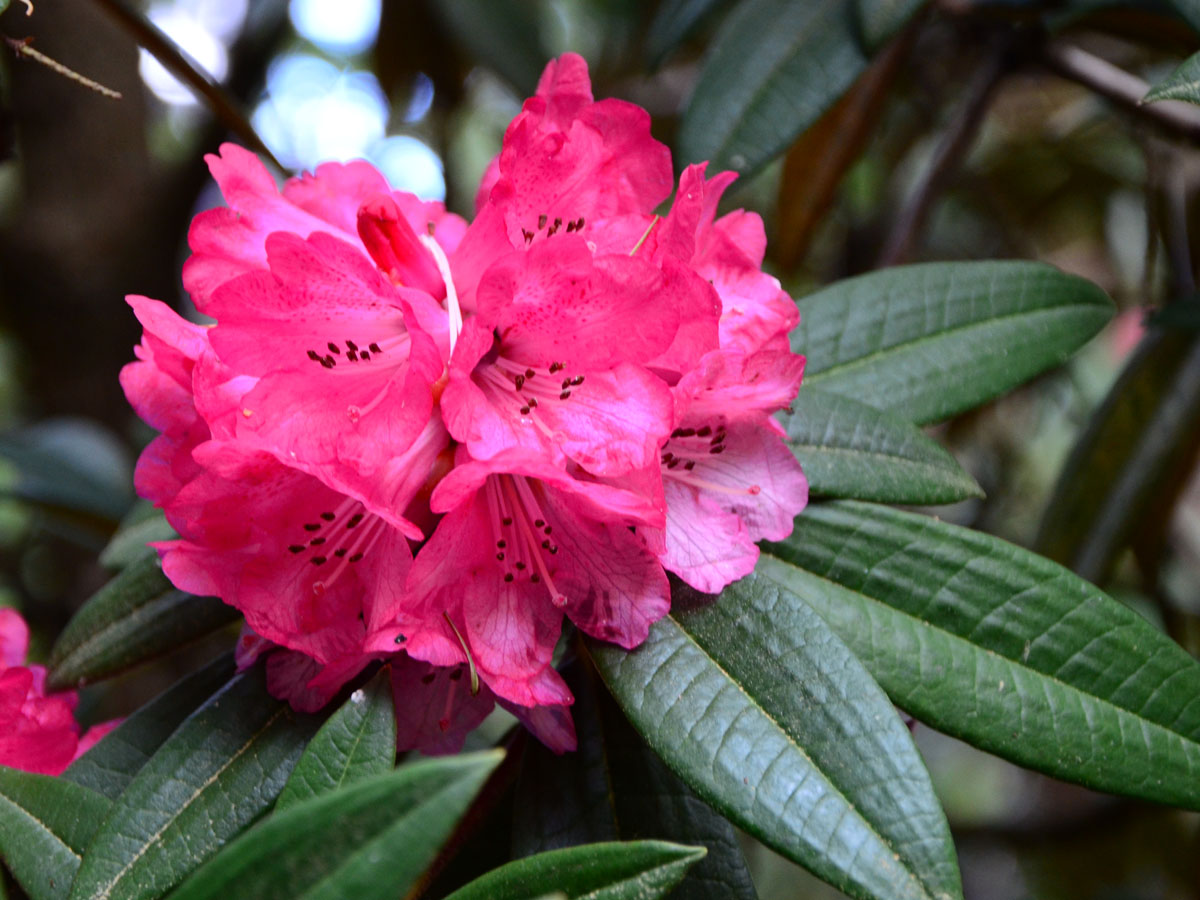
June Sinclair Garden |
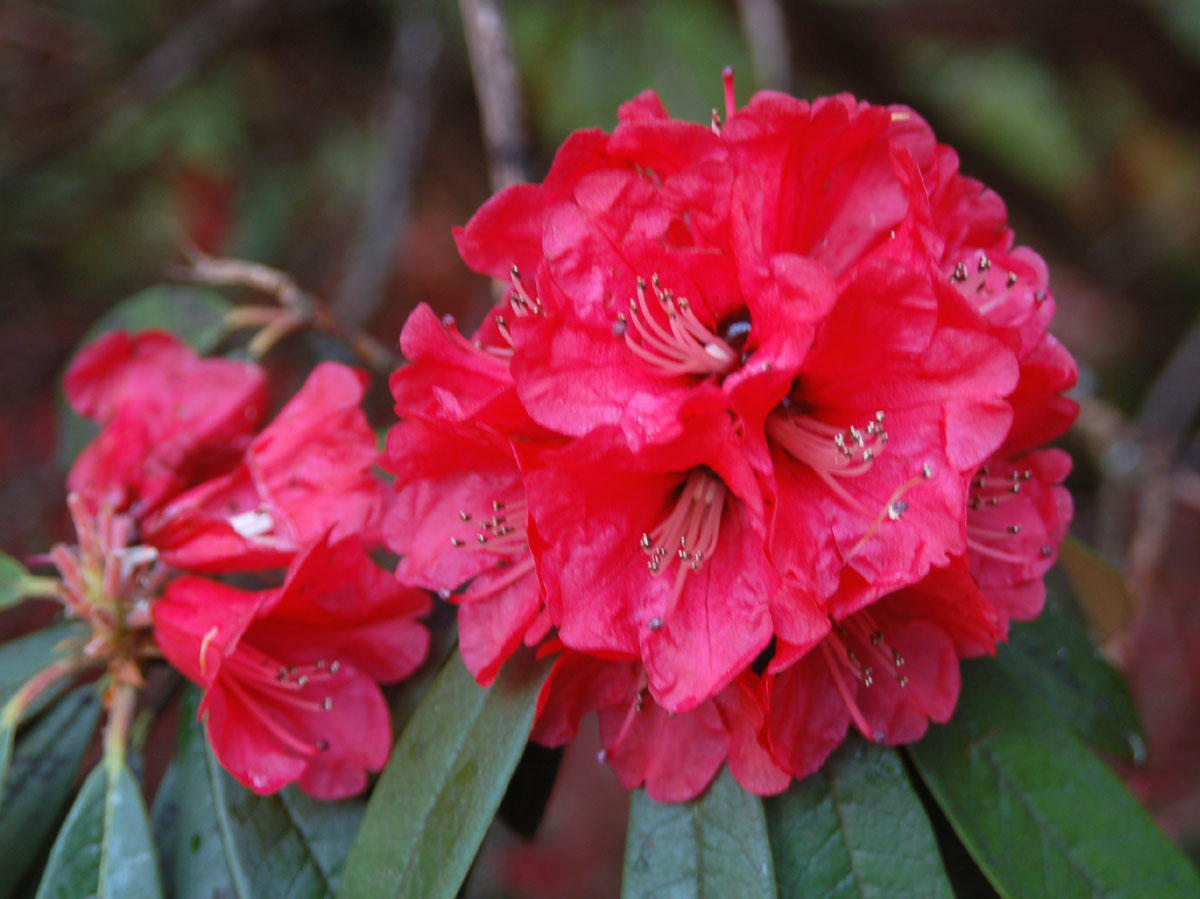
R. arboreum ssp. delavayi |
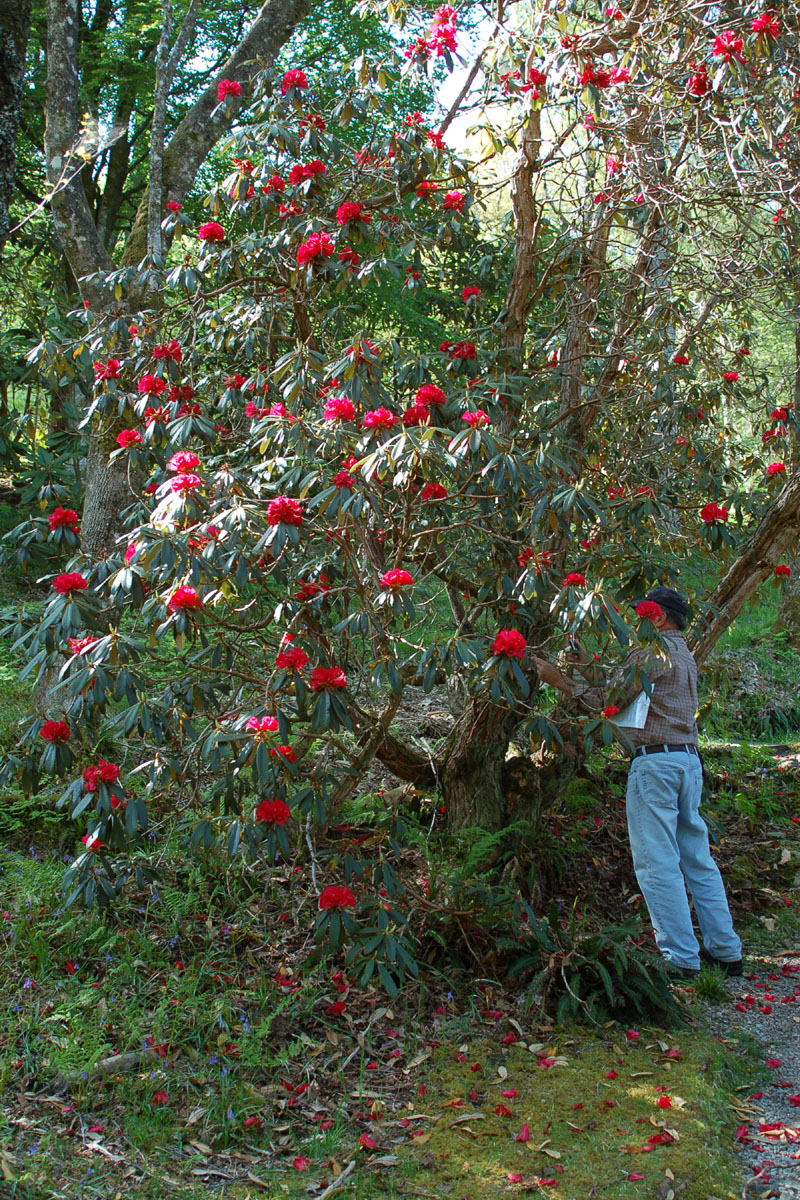
Karel Bernady inspects R. arboreum ssp. delavayi at Crarae Gardens, Scotland |
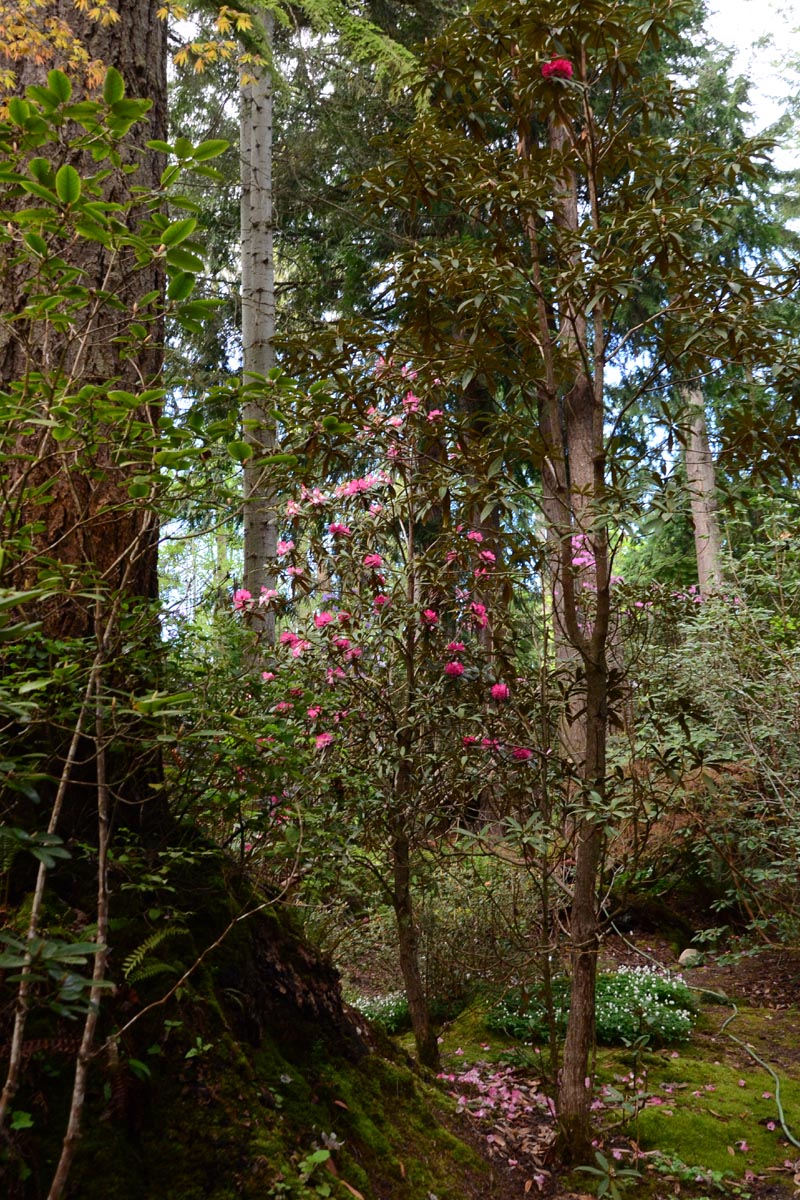
R. arboreum, tall trees, and wildflowers |
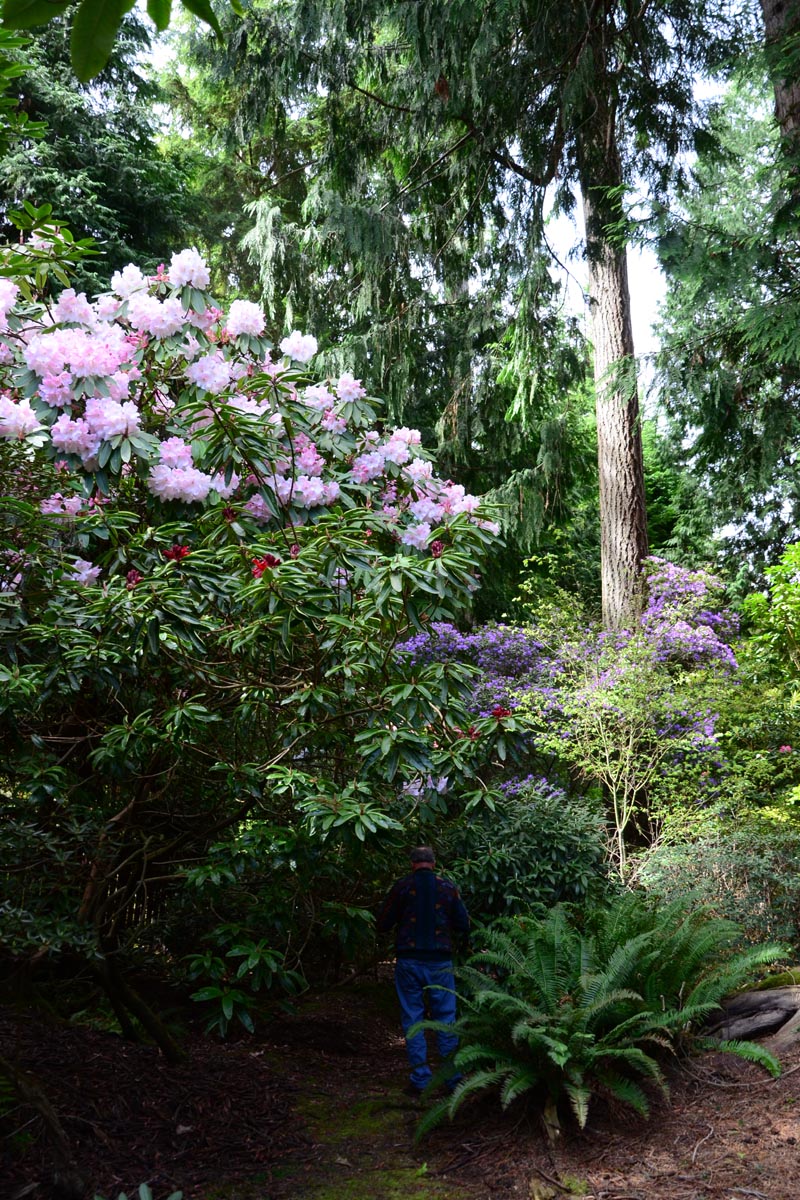
June Sinclair Garden R. fortunei, ferns, and R. augustinii |
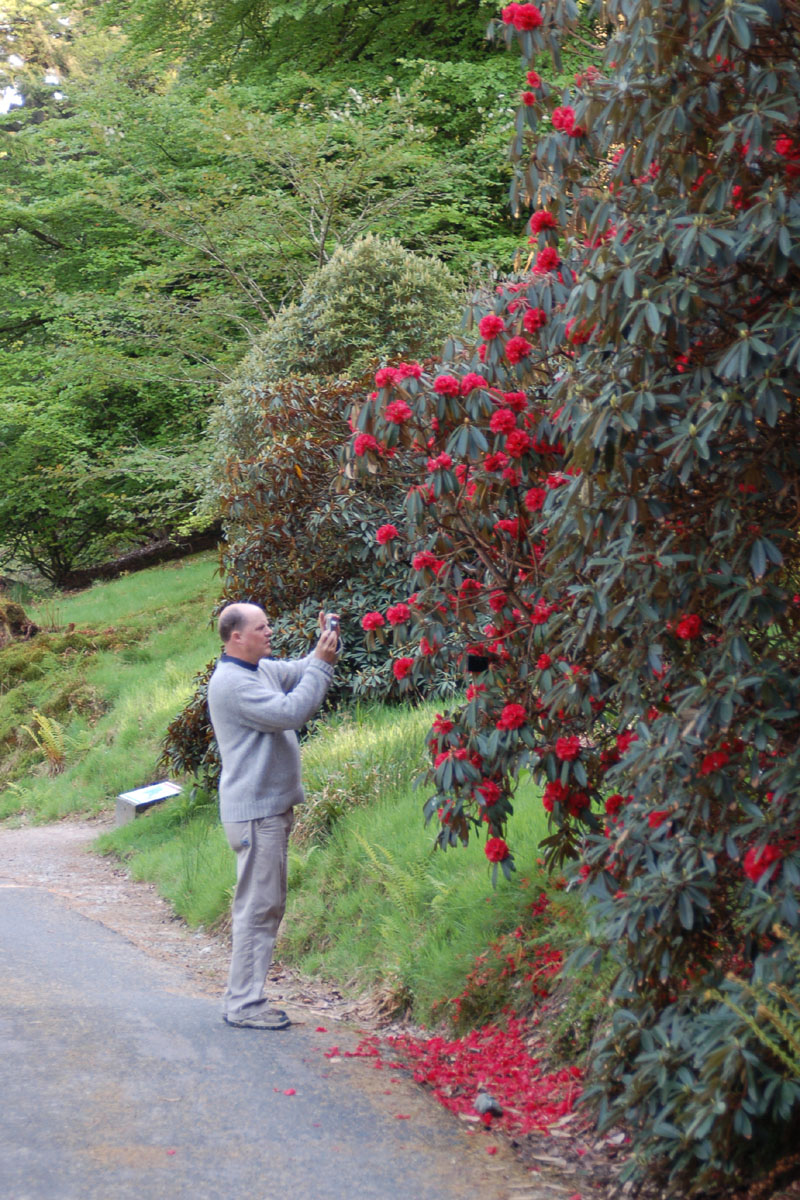
Steve Krebs photographs R. arboreum ssp. delavayi at Benmore |
Mad HoneyMany rhododendrons contain toxic substances but some may have medicinal value when used properly. They can also be dangerous if one is not careful. A natural neurotoxin called grayanotoxin is present in varying amounts in many rhododendron species. It is a known hallucinogen that can cause problems even in small amounts.Bees that gather nectar from certain rhododendrons can produce “Mad Honey”, also known as “Deli Bal”. In Turkey, the native yellow azalea R. luteum and purple rhododendron R. ponticum are both high in grayanotoxin. The hallucinogenic honey produced by bees in this region can be quite debilitating. In 69 BC, an army of Roman soldiers invading the Black Sea region under the command of General Pompey, found chunks of honeycomb along the road left by the local people. They happily consumed the honey, but became disoriented by the intoxicating substance and were easily slain by the local opposing army. |
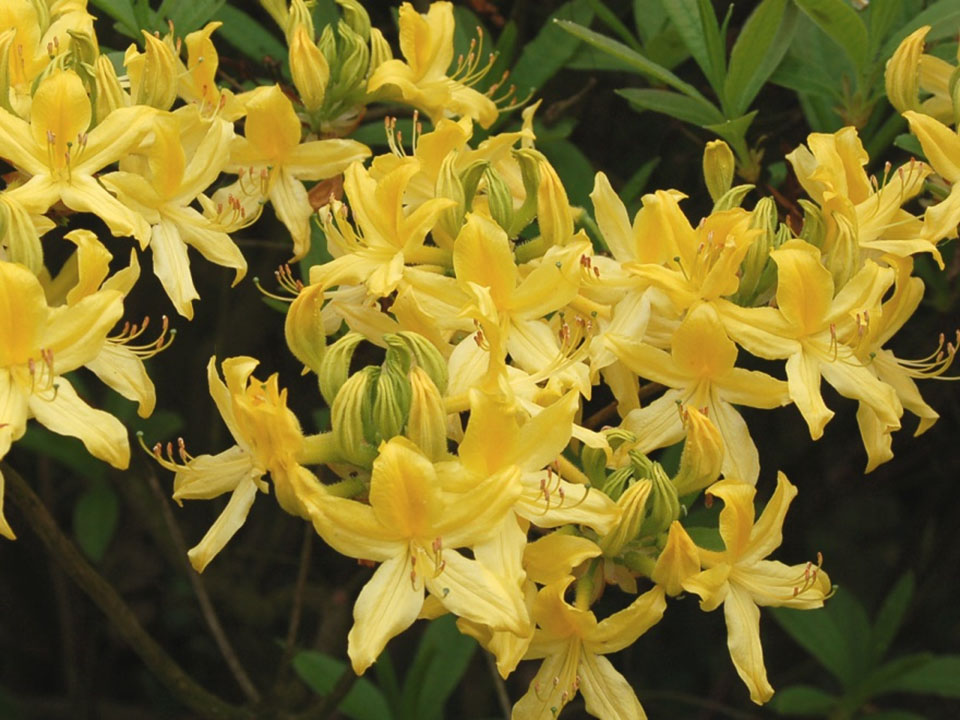
R. luteum Internet Link: The Strange History of Mad Honey |
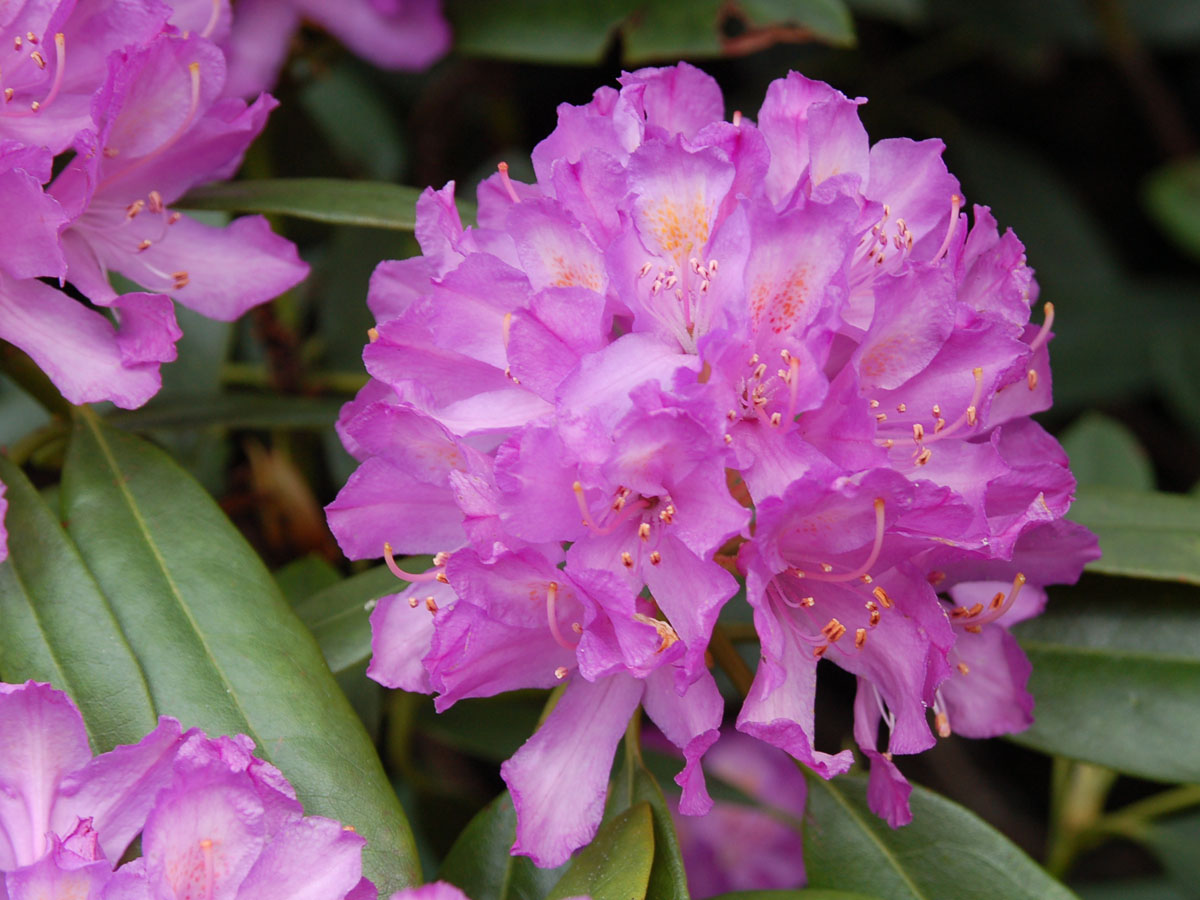
R. ponticum Internet Link: Wikipedia on Grayanotoxin |
Mad Honey from NepalIn Nepal, there are no native plants of R. luteum or R. ponticum, but the flowers of R. arboreum also contain ample amounts of grayanotoxin. The honey produced from this region is red due to the flower color of this species rather than the dark brownish yellow color typical of Deli Bal from Turkey. If one consumes too much Deli Bal, outcomes can range from hallucinations, a slowed heartbeat, nausea, temporary paralysis, and unconsciousness. There have been no reports of deaths from Mad Honey in recent years but people should be careful to limit its use. The recommended dose is no more than one teaspoon a day.
Promoters of Mad Honey claim that this natural medicine can be used to cure pain, reduce stress, relieve hypertension, resolve sleep disorders, provide mental clarity, give people more energy, and even serve as a substitute for Viagra. It almost sounded like it was a panacea for the ills brought on by the pandemic. Mad Honey is popular, and the most expensive honey in the world. A pound sells for $60 to $80 on the Black Market! |
Buransh Juice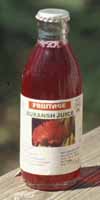 There is also a red health tonic called Buransh Juice made from arboreum flowers. At a chapter picnic many years ago, one of our Associate Members, Vijay Chandhok, brought us a small bottle of the juice (pictured right) that we shared. Vijay was originally from India and had property near the Himalayas in arboreum country that he and his wife Shelly tried to visit regularly, especially in March when the rhododendrons start to bloom.
There is also a red health tonic called Buransh Juice made from arboreum flowers. At a chapter picnic many years ago, one of our Associate Members, Vijay Chandhok, brought us a small bottle of the juice (pictured right) that we shared. Vijay was originally from India and had property near the Himalayas in arboreum country that he and his wife Shelly tried to visit regularly, especially in March when the rhododendrons start to bloom.
We divided the Buransh juice into little cups so everyone could have a small sip. It really wasn't enough for us to notice any health benefits but at least we had a chance to taste it. The flavor reminded me of Hawaiian Punch. Great fun! |
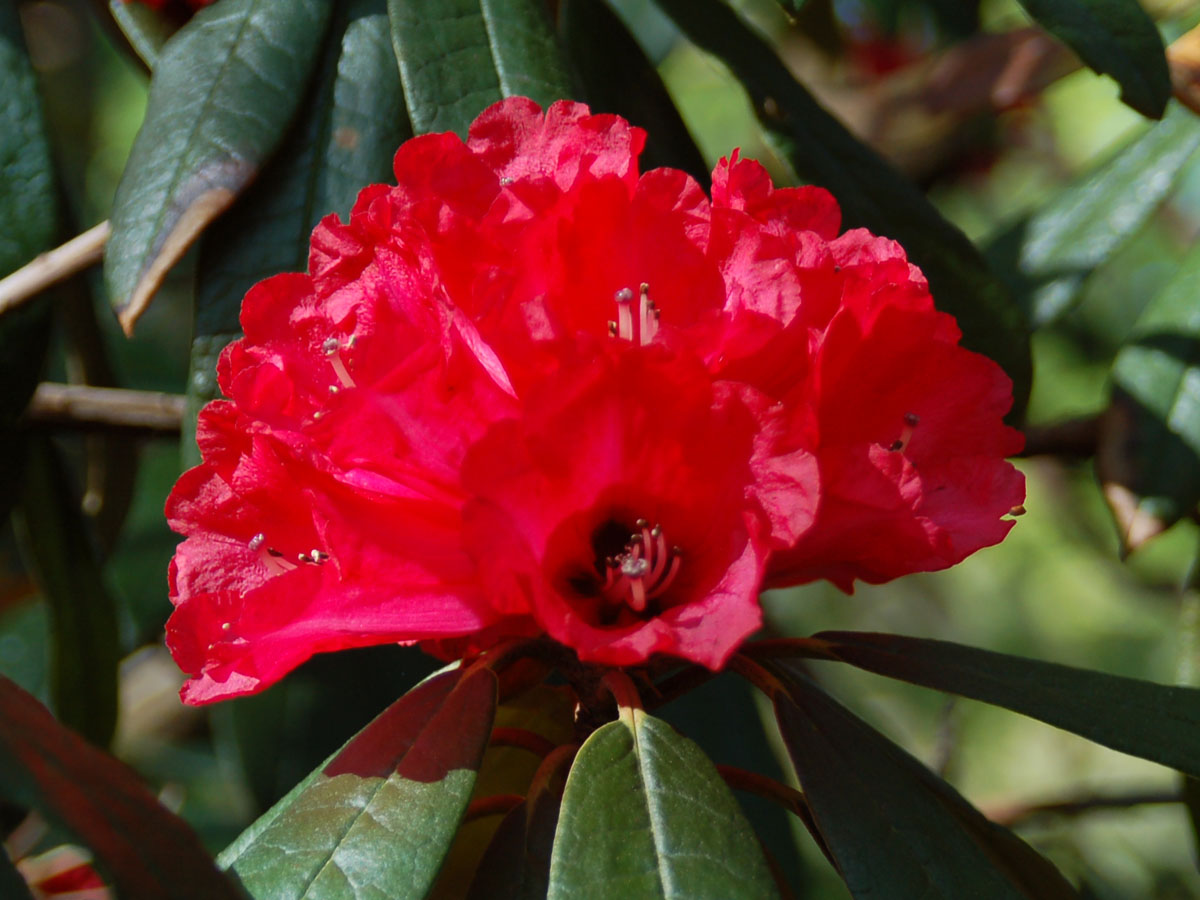
R. arboreum ssp. delavayi Video: Harvesting Mad Honey (23 minutes) |